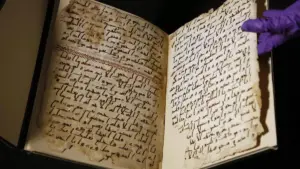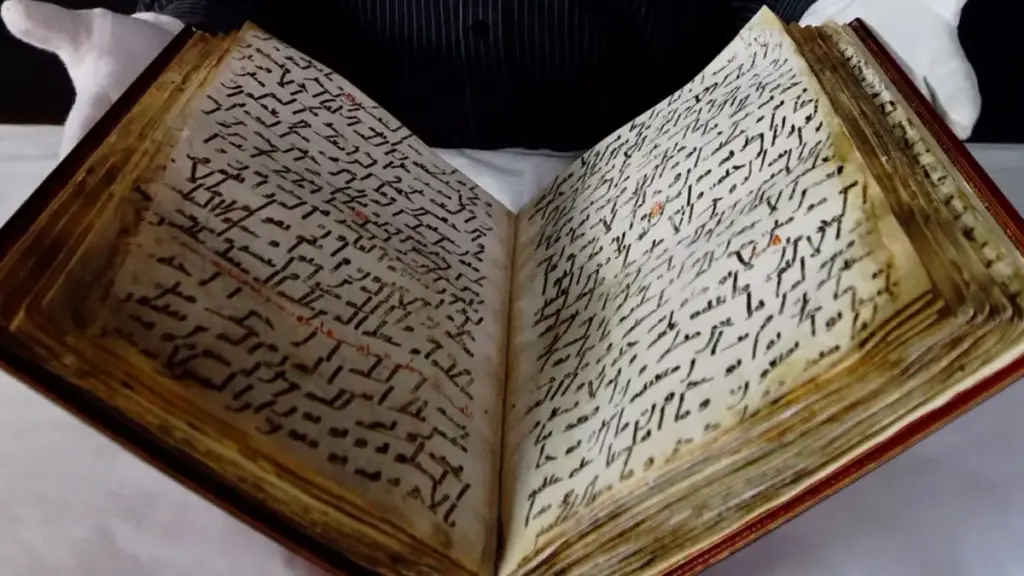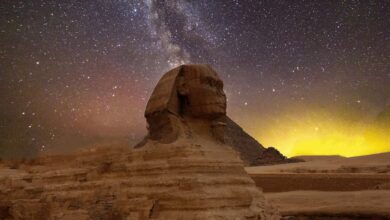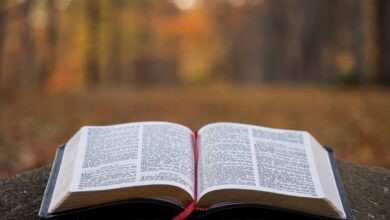The Oldest Quran In The World
What Is The Oldest Quran In The World?
The Quran, a holy book of Islam, is an important historical and religious document that has affected the lives of hundreds of millions of Muslims worldwide. The history of the Quran is an intriguing one stretching over centuries from its revelation to Prophet Mohammad in the 7th century to its subsequent collection into a single codex by the early Muslim community.
This article focuses on the origin, the first copies, and the compiling and editing process of the Quran.
History of the Quran
Origin and Revelation
Muslims believe that this book was revealed orally by God to His last prophet Mohammed through the angel Gabriel for over 23 years between AD 610 – 632.
Muslims maintain that it was first memorized by his early followers before being transcribed into different materials like bone, stones, parchment, paper, etc.
Early Manuscripts and Discoveries
Early Quranic manuscripts have been discovered in various locations, providing valuable insights into the history of the text. One such discovery was made in 1972 during the restoration of the Great Mosque of San’a in Yemen, where laborers found a “paper grave” containing tens of thousands of fragments of parchment with verses of the Quran.
More recently, the Birmingham Quran manuscript was discovered in the University of Birmingham’s Mingana Collection, which was radiocarbon dated between 568 and 645 CE.
Compilation and Editing
Following Mohammad’s death, the Quran was edited and compiled into a comprehensive book by the early Muslim community. This process involved collecting all the Quranic material that had been written down on various materials and organizing it into a single-volume book.
The order of the surahs was not based on the order in which they were revealed, but rather on the consensus of the companions.
Controversies and Debates
The Quran’s history is the topic of academic studies and debates in which scholars question the traditional understanding or origins of the book and how it was compiled. Some scholars have suggested modifications or even complete reconsideration of the traditional view, while others have defended the Islamic narrative.
The history of the Quran has been an intriguing and intricate tale comprising revelation, preservation, transmission, and finally compilation into a whole book. The study and availability of early Quranic manuscripts provide new insights into this significant phase of Islamic history.
Discovery of the Oldest Quran
The Birmingham Quran manuscript is a significant historical artifact that has been radiocarbon dated between 568 and 645 CE, making it one of the oldest known Quranic manuscripts.
The manuscript, which is part of the Mingana Collection of Middle Eastern manuscripts held by the University of Birmingham’s Cadbury Research Library, consists of two parchment leaves containing parts of Surahs 18 to 20. The leaves are written in ink using an early form of Arabic script known as Hijazi and are still legible.
Radiocarbon Dating and Its Significance
Radiocarbon dating, which was carried out at the University of Oxford, placed the Birmingham Quran manuscript close to the time of the Prophet Mohammad, who is generally thought to have lived between 570 and 632 CE.
This result contributes significantly to our understanding of the earliest written copies of the Qur’an and has global significance for Muslim heritage and the study of Islam.
Comparison with Other Early Quranic Manuscripts
The Birmingham Quran manuscript is not the only early Quranic manuscript that has been discovered. In 1972, over 12,000 Quranic parchment fragments were found in the Great Mosque in the Yemeni capital Sana’a.
These fragments, which consist of tiny snippets to whole folios belonging to some 926 copies of the Qur’an, have been dated to the period between 568 and 645 CE. However, no substantial textual differences have been found between these early documents and the Qur’anic text as we know it.
Controversies and Debates Surrounding the Manuscript
The discovery of the Birmingham Quran manuscript has sparked debates and controversies among scholars. Some scholars argue that the manuscript is a descendant of the Uthmanic text type, which was fixed under the direction of Caliph Uthman in about 650 CE.
Others suggest that it is unlikely that the manuscript is a pre-Uthmanic manuscript, despite its early radiocarbon dating.
Islamic studies and scholarship have been significantly affected by this uncovered manuscript. It has served as an invaluable source of information to scholars about how the Qur’an came into being and how it underwent different stages thereafter. Furthermore, the manuscript has lengthened the debate on whether or not the Qur’an’s text can be seen as authentic or historically accurate.
The research focus could shift to learning more about the contents, language, and style as well as its implications within Islam. Then research in the future could concentrate on different aspects of Islam including its history, development of early texts, and growth of Islamic culture.
The early history of the Quran and its development are viewed differently after the discovery of the Birmingham Quran Manuscript.
This crucial religious document can be better understood by placing it in time using carbon dating. Additionally, such factors as its comparison with other early Quranic manuscripts and its influence on Islamic studying have also improved our knowledge of this book among others.
The 7 Oldest Qurans in the World
The Muslim holy book called the Quran, has been copied and protected for many years. Word for word, it was exactly written and passed down through generations. There are a few of them that are particularly remarkable among the numerous Qur’anic manuscripts.
In this part we will go back in time by exploring the seven oldest Qurans ever discovered around the world; everyone possessing its own peculiar history and meaning.
1. The Blue Quran
Also called the Quranic Codex of the Mosque, it is a masterpiece of Islamic art and calligraphy. It dates from the late 9th to early 10th centuries and is highly regarded for its splendid beauty. Written on blue-colored vellum with gold ink, these pages are what lend this Quran its name.
This Blue Quran was apparently made for Qairawan’s Great Mosque in Tunisia, which serves as clear evidence of its creators’ talent and skills in arts. This may have been influenced by the Byzantine Empire’s pompous official documents that were written on blue vellum with gold ink; thus demonstrating cultural exchange and interaction at that time.
However, various institutions all over the world still hold parts of the Blue Quaran while individual folios continue to be sold at auctions fetching astonishing prices; an example being one folio that fetched over $800,000 in recent years.

2. The Samarkand Kufic Quran (Uthman Quran)
For centuries, the Samarkand Kufic Quran was one of the oldest known copies of the holy Quran. This revered manuscript dates back to between 765 and 855 AD, making it a significant part of Islamic tradition. It is thought by some to be from among Uthman’s commissioned Qurans in 651 AD just nineteen years after Prophet Mohammad died.
Uthman hoped to create an official edition of the Quran that would maintain its authenticity and prevent any discrepancies while reading it. However, new research has refuted this notion and suggests that the Samarkand Kufic Koran may have been made more than one century later than his reign.
Regardless of its uncertain origins, the Samarkand Kufic Quran is an invaluable source for appreciating early Arabic calligraphy on Qur’anic manuscripts and the preservation of Islamic scriptures.
3. The Topkapi Manuscript
The Topkapi manuscript was once regarded as one of the oldest Qurans in the world, just like the Samarkand Kufic Quran. However, recent research has shown that it is at least a hundred years younger than the oldest fragments of the Quran.
The Topkapi manuscript, dated to around 700 or 750 A.D. holds the honor of being the earliest almost complete copy of the Quran. Although there are older ones in general this piece is significant due to its entirety (Entirety as opposed to fragmentary), which showed a high level of dedication by Islamic scribes towards their work.
Like the Samarkand Quran, initially, people thought that the Topkapi manuscript was an original Quran made on commission from caliph Uthman in 651 AD. Yet, scholars have since disproved this claim, placing it concretely into the eighth century.
This ancient manuscript found in Istanbul, Turkey’s Topkapi Palace Museum provides clues about early efforts by Islamic scholars and calligraphers to safeguard priceless religious writings.
4. The Codex Parisino-Petropolitanus
The Codex Parisino-Petropolitanus is an incredible Quranic manuscript that has been scattered among various institutions across the globe. This 98-folio manuscript was found originally as a collection of fragments in the Amr Mosque in Fustat, Egypt, and dates back to the late 7th or early 8th century.
During the Napoleonic expedition of the late 18th century, Jean-Joseph Marcel (a French scholar) acquired several folios and subsequently, Jean-Louis Asselin de Cherville (another Frenchman) got some more pages. Presently, there are four different locations where you can find Codex Parisino-Petropolitanus; which are Bibliothèque Nationale de France in Paris, the National Library of Russia in Saint-Petersburg, the Vatican Library, and the Khalili Collection in London.
Research done by Yassin Dutton who is a well-known scholar reveals that the manuscript may have been written in Syria owing to its qira’at (readings/recitations) which resemble those of Ibn Amir of Damascus’. These findings help us understand how the Quran would have moved from one place to another within different regions of Islam.
5. The Sana’a Manuscript
Recently, the oldest known fragment of the Quran, the Sana’a manuscript was discovered in the year 1972 while renovating the Great Mosque of Sana’a in Yemen. It is one of many ancient manuscripts found in this mosque including others that were not preserved well and are all torn apart.
It was only in 1981 that this manuscript was recognized as part of the Quran, an occurrence that led to a massive rehabilitation effort by the Yemeni Department for Antiquities with collaboration from external institutions. Carbon-14 dating has determined that it is possible to assign such a time period to the lower codex of the San’a manuscript with a precision rate of 99%, placing it among the earliest copies remaining today.
The discovery of The Sana’a Manuscript has thrown new light on the early transmission and preservation history of the Qur’an, making it the real connection between the Prophet Mohammad era and the first Muslims who lived then.
6. The Tübingen Fragment
The Tübingen Fragment is a remarkable example of how early Islamic texts were preserved as can be seen from the other ancient Quranic manuscripts that have stood the test of time. This fragment is kept in Germany at the University of Tübingen, and scholars have agreed to date it back between 649 AD and 675 AD. It was written approximately 20-40 years after Prophet Mohammad’s death.
What makes The Tübingen Fragment so important is its remarkable antiquity, which was established by means of meticulous radiocarbon dating analysis performed at a laboratory in Zürich. This modern scientific method showed that it falls within a range of 95.4% confidence during this period; i.e., the manuscript has an age estimate that ranges from –20 to +40 years after Mohammad’s death.
The story behind how the fragment came into possession of the University of Tübingen itself is quite fascinating. The first Prussian Consul for Damascus, Johann Gottfried Wetzstein, purchased it along with several other old Arabic papers in the course of his duties during the XIX century. Today this acquisition can be found at the institution where it remains permanently for all to observe and study.
It is through a collaborative project, which was funded by Deutsche Forschungsgemeinschaft (DFG) and its French counterpart Agence National de la recherché (ANR), that we are able to determine the age of the Tübingen fragment. This kind of international cooperation emphasizes the fact that ancient Qur’anic manuscripts like these have global importance and their historical secrets are still being revealed.

7. The Birmingham Quran Manuscript
The Birmingham Quran Manuscript is one of the oldest manuscripts in the history of the Qur’an. While it is housed at the University of Birmingham in England, this unique object consists of two parchment leaves that have been exactly dated as belonging to a period between 568 AD and 645 AD which translates to up to 95.4%.
It is important to note that this date range places the Birmingham Quran Manuscript within the lifetime span of Prophet Mohammad who lived from around 570 AD to 632 AD. These are incredible findings that imply that this manuscript was probably prepared a few decades after the revelation of the Quran and therefore can be used as a unique source for understanding early developments in Islamic scriptural transmission and preservation.
The manuscript itself contains text from chapters 18-20 (surahs) or Sura Kahf, Mariam, Taha, and Al-Anbiya. They were written using the Hijazi script, an ancient Arabic handwriting style commonly used during the early days of Islam. The way these parchment pages have been preserved so well is also a testimony to how highly regarded the Qur’an has always been by Muslims throughout its history.
The University of Birmingham researchers who used the most advanced radiocarbon dating methods have managed to identify how old it is with an incredible amount of accuracy. This has created a huge interest in scholarly circles and led to a new understanding of the first copies of the Muslim book.
This manuscript, known as The Birmingham Quran Manuscript, provides physical evidence of the early development of Islam that offers a unique window into the world of Prophet Mohammad and his contemporaries, including those who played critical roles in safeguarding and transmitting divine revelations.

Conclusion
The Blue Quran, Samarkand Kufic Quran, Topkapi Manuscript, Codex Parisino-Petropolitanus, and Sana’a Manuscript are the seven oldest Qurans that will be explored in this article. Nonetheless, among these great collections is a manuscript that stands out as the oldest Quranic text ever found: the Birmingham Quran Manuscript.
Radiocarbon dated to between 568-645 AD with an accuracy of 95.4 %, it might mean that the parchment pages of Birmingham Qran were inked just a few years after the death of Prophet Mohammad himself. This makes it a priceless archeological and religious artifact. It links up the revelation from Allah and earliest written records which gives unique insight into one of the world’s most sacred scriptures.
By discovering this monumental Birmingham Quran Manuscript, long-standing beliefs on chronology of transmission and preservation have been shattered. As Islamic faith’s most ancient manuscript copy is a testament to Muslim legacy endowment and dedication towards maintaining purity within the holy book.


